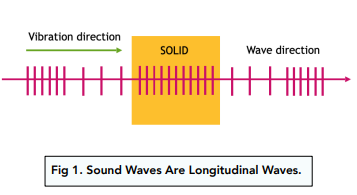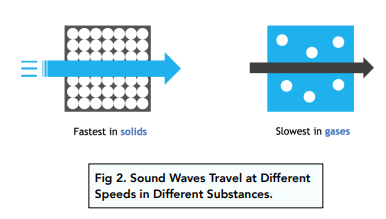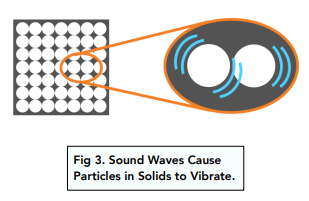Sound Waves Through Solids (GCSE Physics)
Sound Waves Through Solids
Travelling Through Solids
- Sound waves are longitudinal. Sound waves are longitudinal waves, which means they vibrate in the same line as the wave direction. These waves can travel through solids.

- Sound travels at different speeds. Sounds can travel at different speeds in different substances. Sounds travel fastest in solids, and slowest in gases.

- Particles must vibrate. Sounds need particles to vibrate and carry the wave. They travel by causing vibrations in the solid. This is why sound waves cannot travel in space.

- Sound waves can be reflected and refracted. Like we will see with all other waves, sound waves can be reflected or refracted. The reflection of sound waves produces echoes.
Sound waves are a type of mechanical wave that travels through a medium, such as air, water, or solids. They are caused by the vibration of an object and are detected by our ears as sound.
In solids, sound waves are able to travel because the particles in the solid are tightly packed together. The particles vibrate back and forth, transmitting the sound wave through the material.
The difference between sound waves in solids and liquids or gases is that the particles in solids are much more tightly packed together. This means that sound waves are able to travel faster and with more energy through solids than they can through liquids or gases.
Some examples of sound waves traveling through solids include the vibration of the strings in a guitar, the vibration of the reed in a saxophone, and the vibration of the soundboard in a piano.
Sound waves are used in many everyday devices, such as speakers and microphones. They are also used in medical imaging, such as ultrasound, and in industrial testing, such as ultrasonic testing for metal fatigue.
No, sound waves cannot travel through a vacuum. This is because sound waves need a medium to travel through, and a vacuum does not provide a medium for the wave to move through.





Still got a question? Leave a comment
Leave a comment